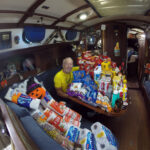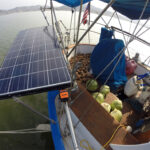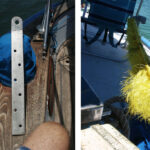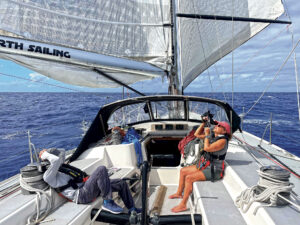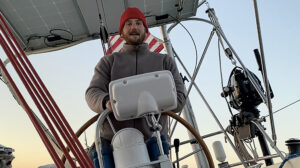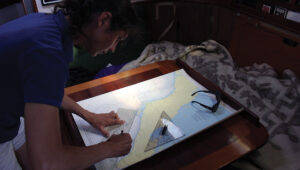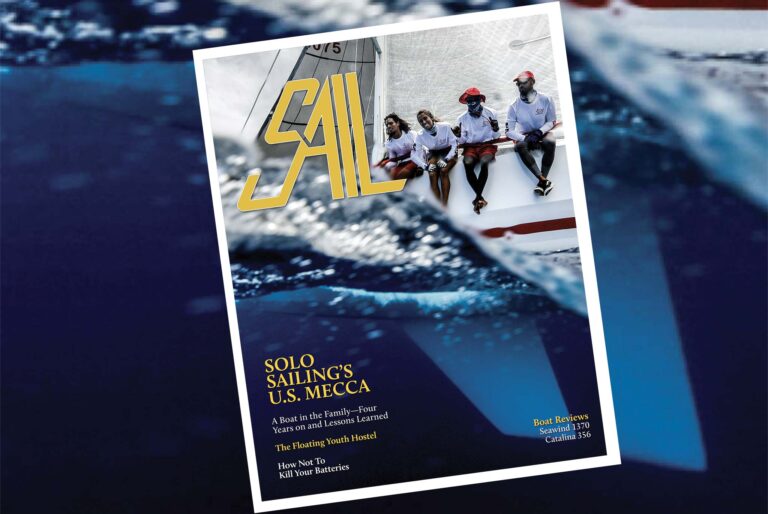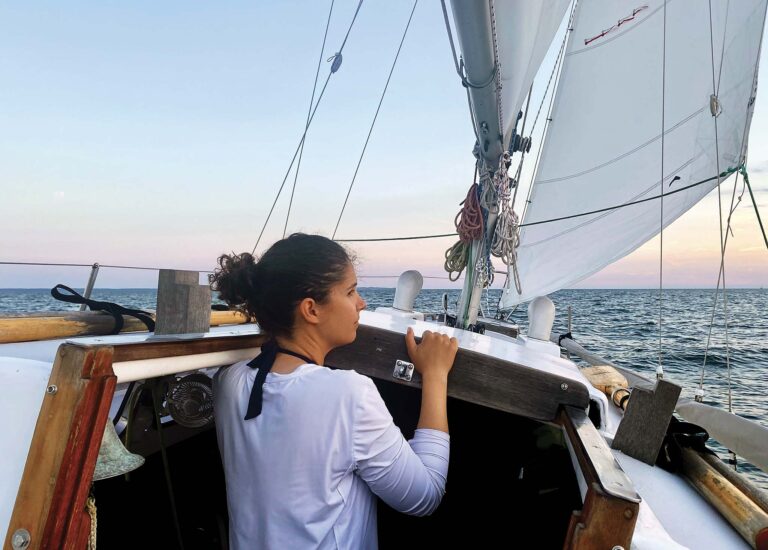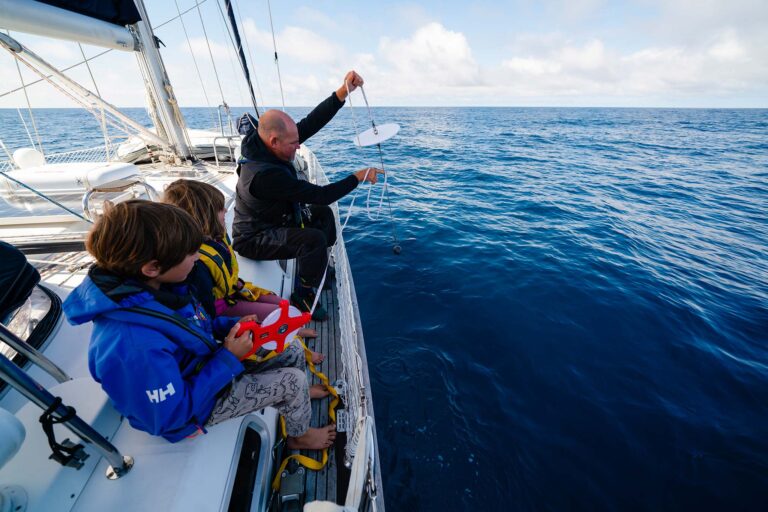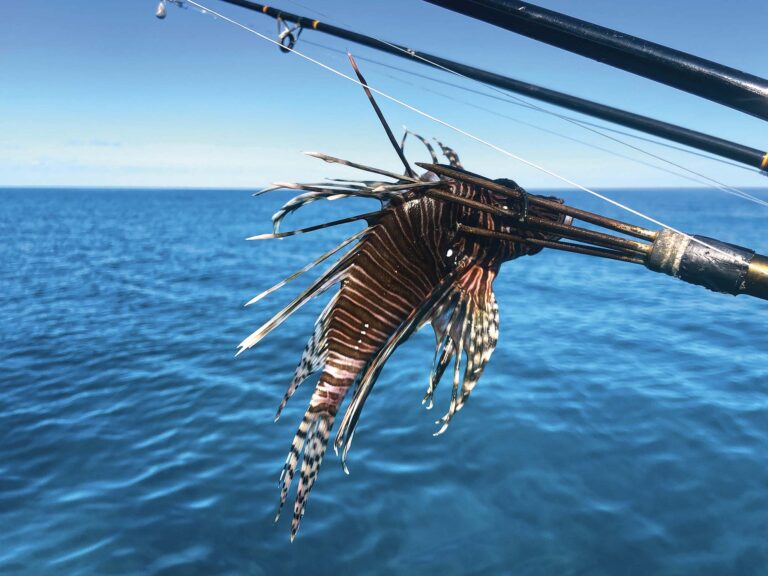
On July 28, 1999, my wife, Debbie, and I cut the dock lines on our Bob Perry-designed Baba 40 ketch, Sailors Run, at the Long Branch Marina in Washington’s South Puget Sound, and sailed away to explore the world under sail: an ambition I had nurtured since I first set foot on a sailboat nearly 30 years earlier. At last, at age 53, and having quit work after saving enough money for us to live comfortably, I never looked back, but only forward, to what might lie over the horizon.
With no time constraints or any of the other restraints that come from owning things on land, the feeling of our new-found freedom was totally intoxicating. Over the next 16 years, Debbie and I voyaged to more than 30 different countries, sailing over 80,000 miles together, and enjoying the lands and cultures of the many wonderful people we encountered—not to mention the wonderful family of cruising friends with whom we share the common bond of living the dream.

Although we both had an appetite for pursuing our cruising life (in my case possibly an insatiable one), over time Debbie’s desire to return back home and be part of her grandchildren’s life gradually became more important. As for me, I somehow felt there was just too much-unfinished business. I had not yet circumnavigated the globe, and I surely was not getting any younger. Now in my late 60s, a quick circumnavigation seemed to make perfect sense. So I decided to sail Sailors Run around the world by myself, nonstop.
I spent the next three years gradually getting Sailors Run “buffed up” for what would be the ultimate challenge; not only for my 45 years of experience but also for Sailors Run’s design and structural integrity, which would be tested to her ultimate limits. Our route through the Southern Ocean south of the five great capes has been the undoing of many a fine sailor and his vessel, and I wanted to be prepared.
With less than a year before departure, Debbie and I hauled Sailors Run out of the water in Chiapas, Mexico, for a fresh coat of bottom paint and a good look at the rudder before sailing to Bahia Caraquez, Ecuador. Our arrival was yet another wonderful cruising experience, this being our third time sailing there; we are considered family by some of our Ecuadorian friends, and their children refer to us as “Uncle Jeff and Aunt Debbie.”
I had sailed around Cape Horn back in 2008-09, and as I’d prepared for that trip it was like there was this mysterious distant drum beating in the back of my mind that seemed to grow louder the closer I got to departure day. Now I was hearing it once again. I flew home to say good-bye to family and friends, but it was somehow different this time, as they knew there was no use trying to talk me out of it. After all, they had all come to accept that sailing was my passion.
On this final trip home, I picked up a new main and mizzen, along with another bilge pump and high-water alarm, just to mention a few of the things that seemed necessary for the success of this voyage. I also found myself sometimes struggling with the immensity of the upcoming voyage and trying to get my head around it—a most difficult proposition, as this was to be approximately five times greater than any sailing adventure I had ever undertaken before.
Provisioning, in particular, seemed to become a bigger and bigger challenge. Sailors Run has an amazing number of compartments as well as a deep bilge for storing provisions. Now the question was what to fill them up with. I knew that the duration of this trip, if successful, would be five to seven months, and some things that you might want to take just won’t keep that long, even with refrigeration. I also knew our basic air-cooled Adler Barbour freezer would only hold enough frozen meat for about two weeks, after which it could be refilled by fishing—hopefully. The only thing I knew for sure was that I didn’t want to starve. I also knew I had to have at least a piece of chocolate and a beer or drink each day to celebrate another day of living.
By the time all the provisions were stuffed aboard there was not a single vacant space. It was all I could do to get the doors shut and the floor boards to lay flat on the cabin sole. We were stuffed to the gills.
At last, it was the final evening aboard before an early-morning departure. Tonight would be my last full night’s sleep for the next six months, and I wanted to hop in my bunk early because the early high tide meant getting up at 0400. The sail covers were off, and I had removed the anchors from the bow and stowed the chain amidships to lighten the bow, helping Sailors Run rise to the steep seas she would be encountering along the way.
Setting the alarm I soon drifted off into a deep sleep, only to wake up seemingly moments later as it went off again. With that I sprang from my bunk filled with excitement as the greatest adventure of my life was about to get under way.

Departure Day
At 0709 Ecuador time on Halloween morning, October 31, 2015, Sailors Run cruised smartly across the starting line on a fast close reach, headed for the Equator, which lay just 37 miles to the north, as it is required that you enter the Northern Hemisphere in a record attempt. We made great time getting to the Equator, and I toasted King Neptune as Sailors Run and I completed our 12th and 13th crossings.
I was anxious now to get offshore, far enough to be clear of the local panga fleet of small fishing boats, before I became too tired and needed some extended hours of sleep. Evening was also approaching, and the winds were clocking around to force me out toward the Galápagos Islands, causing me to sail in a more westerly direction, about 30 degrees off my desired course. These same winds would eventually take me west of Easter Island before turning toward Cape Horn for the east-around passage.
I stayed in the cockpit for the next 24 hours, taking 20-minute catnaps and sailing fast offshore. Unfortunately, soon afterward I started to hear the sound of the Air-X 400 wind generator shutting down repeatedly. An important piece of equipment, this wind generator has been with me for 16 years and given me wonderful service—it had, for example, supplied all my energy needs on my previous Cape Horn Trip in 2008. So I told myself I would just have to start troubleshooting and pray I could get it back working properly.
To give you an idea of the kind of daily routine I was in for, here are some excerpts from my first week’s logs.
Ship’s Log, Day 4. 24 hr run: 119nm. Lat/Lon: 02°02’S, 87°02’W. Weather: Mostly overcast. Temp: 78°-81°. Wind: S 7 to 12kts. Seas: 2ft to 5ft from the South. Barometer: 1008mb. This morning, I fired up the Honda generator and let it charge for two hours, at a rate of 50 amps, topping off my eight golf-cart batteries. I have just 26 gallons of gas for charging and get about four and a half hours of charge time out of each gallon. I can also charge with the main engine in neutral if need be, which gives me another 250 hours of charging at approximately 65 amps. Then there’s my 420 watts of solar power. Bottom line: I’m sure if need be I can make it without the wind generator.
In addition to my power-generations concerns, I also had to take evasive action during the night to avoid a collision with a fishing boat, tacking away onto starboard for about five minutes before resuming my course on port.
The fishing boat was wood and not visible on radar. Nor was he transmitting an AIS signal. Fortunately for me, I had seen his lights while having a look about on deck. I was extra cautious on this night because I had seen a wooden fishing boat earlier in the day with three small sailing craft in tow behind him like little ducks. They use these boats in their fishing efforts as they require no fuel. The crew of about 10 waved a hearty greeting as we passed each other within several hundred feet of one another.
Ship’s Log, Day 5. 24 hr run: 146nm. Lat/lon: 03°37’S, 88°52’W. Weather: Sunny all day. Temp: 78°-81°. Wind: SSE 10 to 17 knots. Seas: 5ft to 8ft. Barometer: 1,010mb.Today I have booby birds diving upon the fish that dart out from under Sailors Run’s plunging bow. We are now within 150 miles of the Galápagos Islands. I feared for a while that I might end up on the south shore of one of these islands as the Humboldt current has been pushing me to the north as I attempt to sail southwest to pick up the southeast trade winds that now lay to the south of me.
Today when the winds piped up to 15 knots, I rolled the genoa in a few turns on the furler. It was then that I saw a tear in the sail. The tear was about 6in long, and I quickly rolled it onto the furler to avoid any further damage. The sail is only five years old, and the tear brought on a sickening feeling, with so far left to go. Fortunately, I can reach the tear from the bow pulpit and will make the repair on the fly, once the seas and winds abate.
At last, I’m happy to report that the course is steerable. I should mention that since sailing around the Equator, the Monitor wind vane has been doing all the steering, and since heading offshore from Ecuador we have been on the port tack, with the exception of dodging the fishing boat during the night.
Ship’s log, Day 6. 24 hr run: 166nm. Lat/lon: 05°29’S, 90°50’W. Weather: Temp 77°-81°. Wind: 15 to 20 knots. Seas: 6ftto 8ft. Barometer: 1,008mb.This day was mostly sunny and clear at night. Total miles sailed so far: 808nm. Distance to turning point for the Horn is 2,402 nm. Top speed so far: 9.8kt.
At last, we have sailed into the southeast trades, I have the pedal to the metal on Sailors Run, and she is hauling ass. Sailors Run loves reaches; it doesn’t matter if it’s a close reach, beam reach or a broad reach. As for me, the skipper, give me fast reaches, sunny beaches and tight britches. Well, something like that. Missing you, Debbie.
Out here you don’t have to worry about working out to stay in shape as you are doing dynamic tension exercise 24/7 and occasionally a yoga stretch that you might otherwise never have attempted.
I eat two meals a day, and it is somewhat like a juggling act just trying to get the makings into a pan on the stove. Yesterday I had a bowl of cereal in my hands that I needed to set down, and the only flat safe place was securing it on a burner on the gimbaled stove. Such is the cruising lifestyle.
The beginning of this voyage seems to be going well, I’m once again one with nature and Sailors Run, as we sail along over a cobalt blue ocean, heading once again into the unknown.
Boat Preparation
Getting Sailors Run ready to circumnavigate the world, was a balance between what was needed to be done and what I could actually afford to do with my limited financial resources. Fortunately for me, I knew well in advance that I was going, so I had several years to get the boat ready.
My list went like this:
1. Built a new hard dodger with my son Dan while anchored up in the San Francisco Delta
2. Replaced all standing rigging on the main mast; the rigging on the mizzen was only five years old, so I left it alone
3. Bought a new main and mizzen; the staysail was in nearly new condition, and the genoa was only 5 years old, so I figured it would get the job done
4. Replaced the split backstay-chain plates, as they were the only two that had not been yet replaced
5. Inspected the entire rig, which revealed that an anchor plate for the whisker stay had a crack in it and had to be replaced
6. Installed new steering cables
7. Replaced 80 percent of the running rigging
8. Installed an AIS transceiver and added a loud alarm that would wake me from a sound sleep
9. Purchased an extra Garmin handheld GPS
10. Replaced all running lights with LEDs
11. Installed 3 x140 watt solar panels, two on 1in steel rails in cockpit and one on top of new hard dodger
12. Upgraded flares and purchased new inflatable life vest
13. Applied 4gal of fresh bottom paint
14. Added an automatic bilge pump and high water alarm
15. Had a new gooseneck built for the main boom
16. Installed lots of baggywrinkle to serve as chafing gear
17. Inspected and re-did all spreader boots
18. Bought an additional 5gal propane tank so that I would have 15gal of gas for cooking.
19. Purchased Spot Locator to broadcast Sailors Run’s location along the way.
Read Jeff Hartjoy Continues his Record-setting Voyage— part 2 here.
Photos Courtesy of Jeff Hartjoy. Map by Steve Jylkka
November 2016

